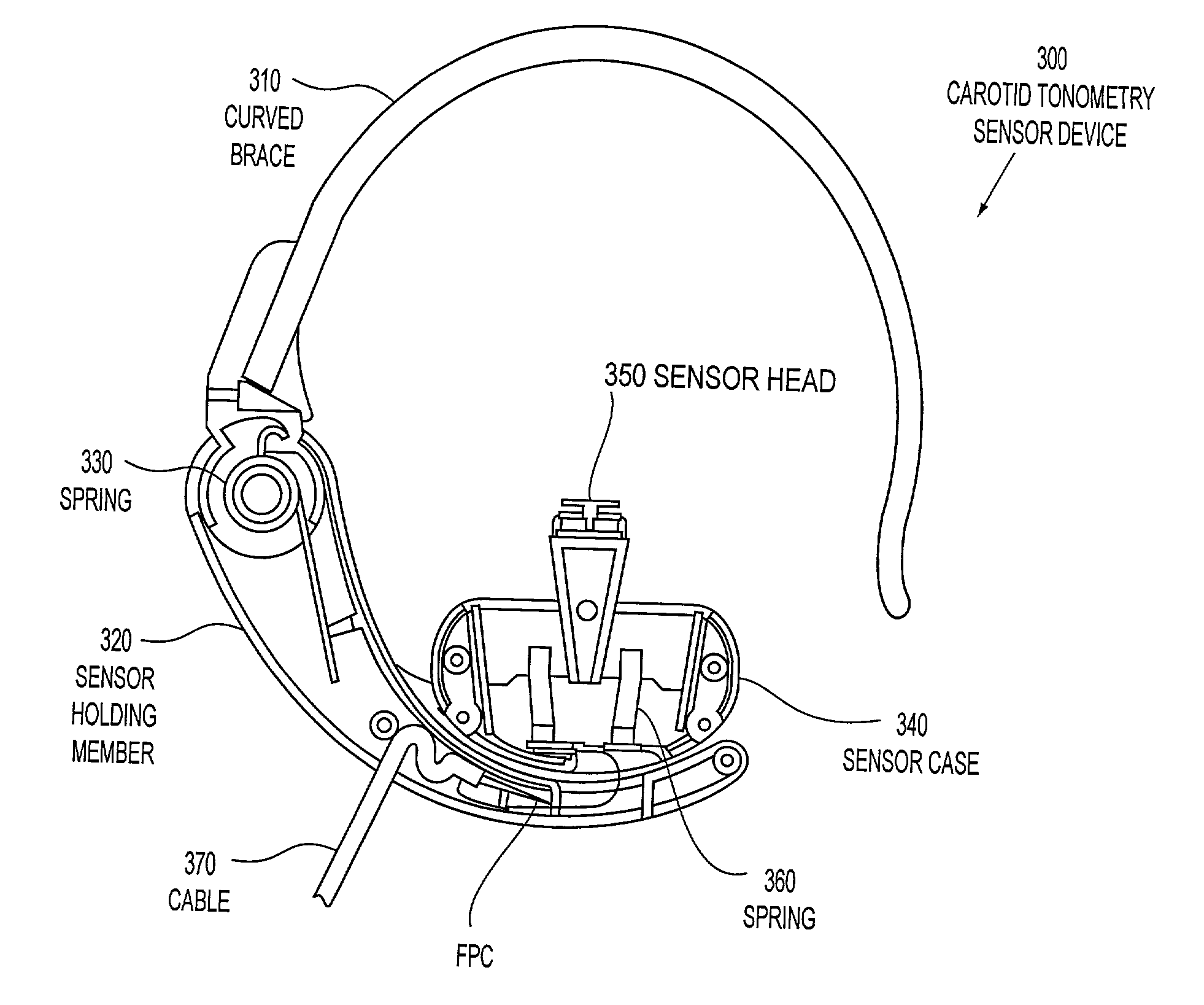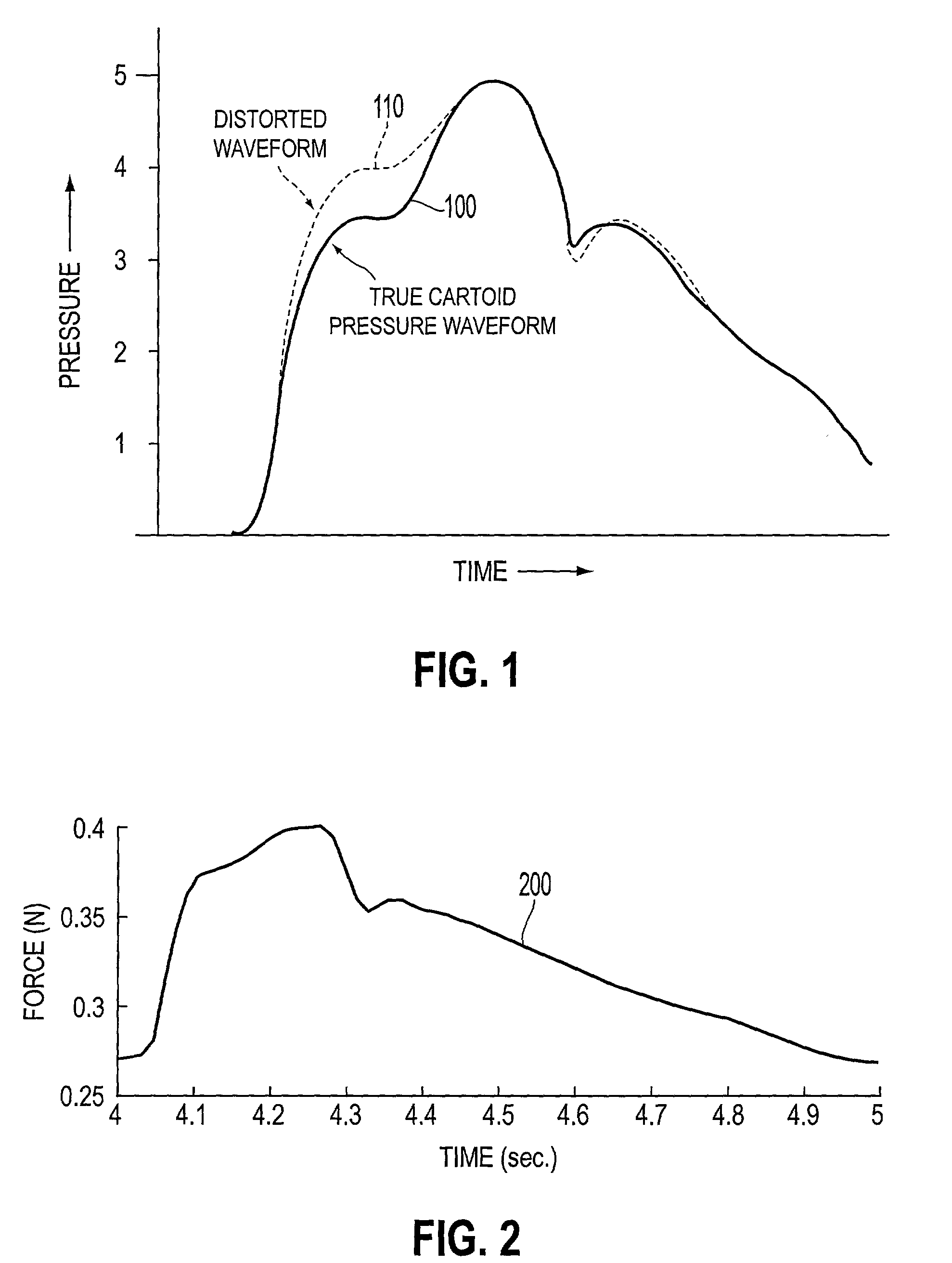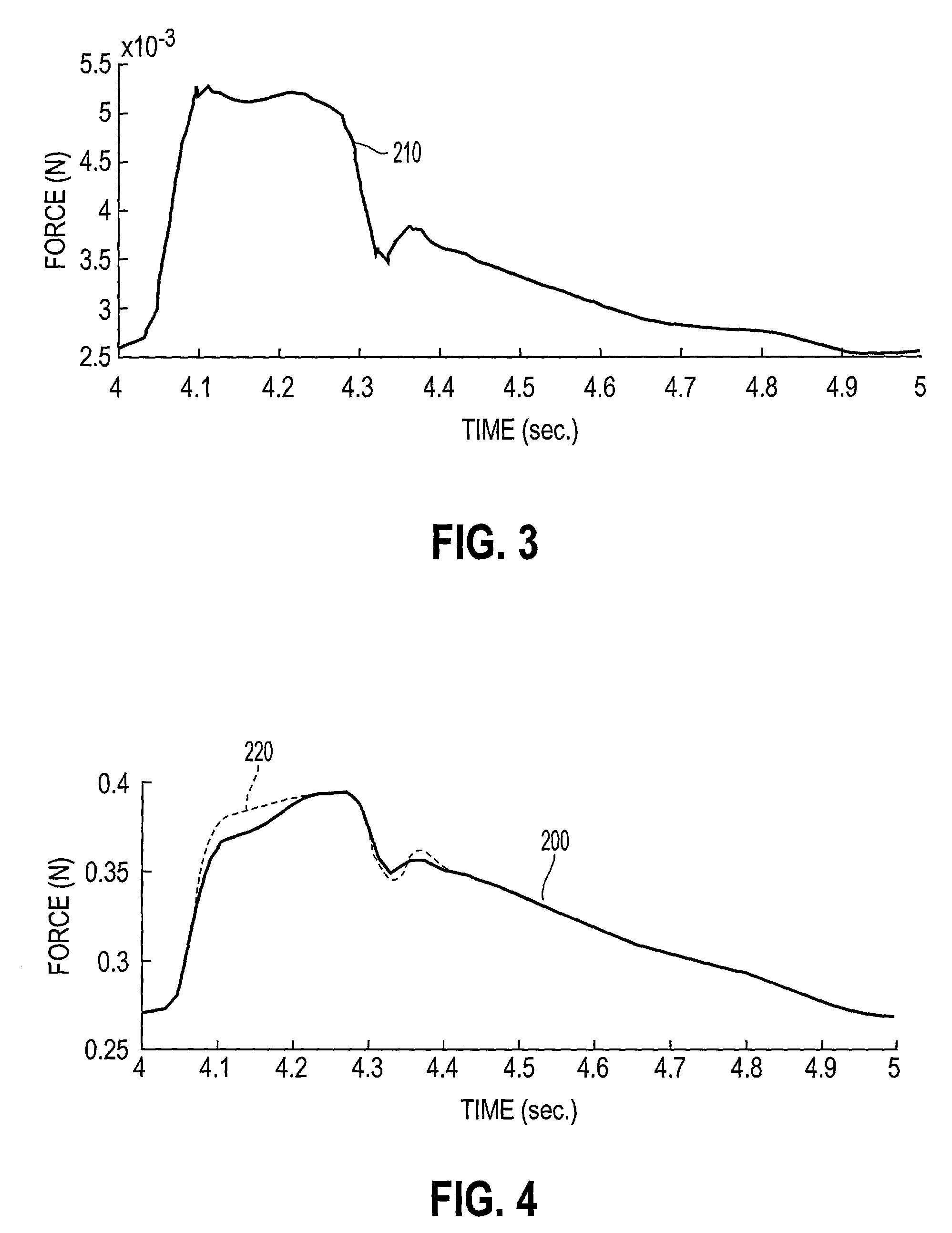Systems and methods for measuring pulse wave velocity and augmentation index
a technology of pulse wave velocity and augmentation index, which is applied in the field of noninvasively measuring vascular pressure waveforms, can solve the problems of inability to accurately measure the vascular pressure waveform prior to noninvasive blood pressure waveform measurement techniques, the risk of bleeding, and the possibility of infection
- Summary
- Abstract
- Description
- Claims
- Application Information
AI Technical Summary
Benefits of technology
Problems solved by technology
Method used
Image
Examples
Embodiment Construction
[0040] FIG. 1 illustrates a general representation of an exemplary hypothetical perfectly-sensed carotid artery pressure waveform 100 of a living being. The hypothetical perfectly-sensed carotid artery pressure waveform 100 is a representation of the shape one could expect a pressure waveform to have, were one able to have a sensor in the aorta to detect the initial and secondary thrusts of blood ejected from the heart or a sensor in the carotid artery, for example, to detect when the initial and secondary thrusts of blood from the heart have reached the carotid artery. The hypothetical perfectly-sensed carotid artery waveform 100 of any being is unique. The hypothetical perfectly-sensed carotid artery pressure waveform is related to several quantifiable factors, such as age, height, weight, and the like, as well as being based on many pertinent non-quantifiable factors, such as mental, emotional and psychological conditions.
[0041] FIG. 1 further illustrates a general representation...
PUM
 Login to View More
Login to View More Abstract
Description
Claims
Application Information
 Login to View More
Login to View More - R&D
- Intellectual Property
- Life Sciences
- Materials
- Tech Scout
- Unparalleled Data Quality
- Higher Quality Content
- 60% Fewer Hallucinations
Browse by: Latest US Patents, China's latest patents, Technical Efficacy Thesaurus, Application Domain, Technology Topic, Popular Technical Reports.
© 2025 PatSnap. All rights reserved.Legal|Privacy policy|Modern Slavery Act Transparency Statement|Sitemap|About US| Contact US: help@patsnap.com



